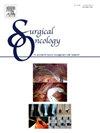Elevating precision: A thorough investigation of multiparametric prostate MRI for prolonged insights into early continence prediction after robot-assisted laparoscopic prostatectomy
IF 2.3
4区 医学
Q3 ONCOLOGY
引用次数: 0
Abstract
Background
While radical prostatectomy stands out as one of the most effective curative treatments for prostate cancer, it does come with annoying side effects, such as urinary incontinence (UI). We aimed to investigate the predictability of UI using MRI measurements, along with clinical and disease-related variables.
Methods
We included 191 patients who underwent robot-assisted laparoscopic radical prostatectomy between July 2020 and October 2022 in the study. Preoperative MRIs of the patients are re-evaluated by an experienced uroradiologist, and membranous urethral length (MUL), urethra wall thickness, levator ani thickness, outer levator distance, Lee's apex shape, intravesical prostate protrusion length, prostate apex depth, and pubic height measurements were made. Additionally, retrospective data on patients' age, BMI, PSA, PSA density, prostate volume, IPSS, clinical stage, and nerve-sparing status were collected. Patients were categorized into two groups based on continence status in the third postoperative month: continent or incontinent. The definition of UI was accepted as the use of one or more pads per day.
Results
UI was observed in 38.21 % of the patients in the postoperative third month. Among MRI measurements, only MUL showed a significant relationship with UI (p < 0.001). IPSS (p = 0.004) and Clinical Stage (p < 0.001) were also significantly associated with continence status. Logistic regression analysis identified BMI (p = 0.023; CI 0.73–0.97), IPSS (p = 0.002; CI 1.03–1.17), MUL (p = 0.001; CI 0.66–0.90), and Clinical Stage (p < 0.001; CI 1.53–2.71) as significant predictors. In Multivariable Regression analysis, Clinical Stage emerged as the most powerful predictor of UI (p < 0.001).
Conclusions
Except for MUL, MRI measurements may not predict postoperative UI. A combination of IPSS, clinical stage, and MUL effectively informs patients about postoperative outcomes. These findings contribute to enhancing preoperative counseling for patients undergoing radical prostatectomy.
提高精确度:对多参数前列腺磁共振成像的深入研究,为机器人辅助腹腔镜前列腺切除术后的早期尿失禁预测提供更深入的见解。
背景:尽管根治性前列腺切除术是治疗前列腺癌最有效的方法之一,但它也会带来恼人的副作用,如尿失禁(UI)。我们旨在利用核磁共振成像测量结果以及临床和疾病相关变量研究尿失禁的可预测性:我们将在2020年7月至2022年10月期间接受机器人辅助腹腔镜前列腺癌根治术的191名患者纳入研究。由经验丰富的泌尿放射科医生重新评估患者的术前 MRI,并测量膜尿道长度(MUL)、尿道壁厚度、尿道外口厚度、外口距离、李氏顶形状、膀胱内前列腺突出长度、前列腺顶深度和耻骨高度。此外,还收集了患者的年龄、体重指数、PSA、PSA 密度、前列腺体积、IPSS、临床分期和神经保留状态等回顾性数据。根据患者术后第三个月的排尿情况将其分为两组:大便失禁和小便失禁。尿失禁的定义是每天使用一个或多个尿垫:结果:38.21%的患者在术后第三个月出现尿失禁。在核磁共振成像测量结果中,只有 MUL 与尿失禁有显著关系(p 结论:除 MUL 外,核磁共振成像测量结果可能与尿失禁有关:除 MUL 外,MRI 测量值可能无法预测术后尿意。结合 IPSS、临床分期和 MUL 可有效告知患者术后结果。这些发现有助于加强对接受根治性前列腺切除术患者的术前咨询。
本文章由计算机程序翻译,如有差异,请以英文原文为准。
求助全文
约1分钟内获得全文
求助全文
来源期刊

Surgical Oncology-Oxford
医学-外科
CiteScore
4.50
自引率
0.00%
发文量
169
审稿时长
38 days
期刊介绍:
Surgical Oncology is a peer reviewed journal publishing review articles that contribute to the advancement of knowledge in surgical oncology and related fields of interest. Articles represent a spectrum of current technology in oncology research as well as those concerning clinical trials, surgical technique, methods of investigation and patient evaluation. Surgical Oncology publishes comprehensive Reviews that examine individual topics in considerable detail, in addition to editorials and commentaries which focus on selected papers. The journal also publishes special issues which explore topics of interest to surgical oncologists in great detail - outlining recent advancements and providing readers with the most up to date information.
 求助内容:
求助内容: 应助结果提醒方式:
应助结果提醒方式:


